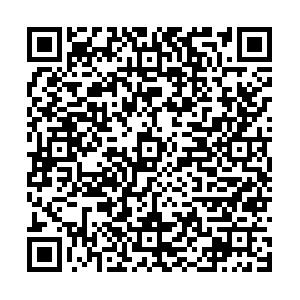|
BRACKSTONE M, MONTANINO M, DAAMEN W, et al. Use, calibration, and validation of traffic simulation models in practice: results of Web-based survey[C]//Transportation Research Board Annual Meeting 2012. Washington D.C.: Transportation Research Board Business Office, 2012: 12-26.
|
|
ESSER J, SCHRECKENBERG M. Microscopic simulation of urban traffic based on cellular automata[J]. International Journal of Modern Physics C, 1997, 8(5): 1025-1036.
|
|
LÁRRAGA M E, del RÍO J A, ALVAREZ-LCAZA L. Cellular automata for one-lane traffic flow modeling[J]. Transportation Research Part C: Emerging Technologies, 2005, 13(1): 63-74.
|
|
王永明,周磊山,吕永波. 基于元胞自动机交通流模型的车辆换道规则[J]. 中国公路学报,2008,21(1): 89-93. WANG Yongming, ZHOU Leishan, LV Yongbo. Lane changing rules based on cellular automaton traffic flow model[J]. China Journal of Highway and Transport, 2008, 21(1): 89-93.
|
|
牟勇飚,钟诚文. 基于安全驾驶的元胞自动机交通流模型[J]. 物理学报,2005,54(12): 5597-5601. MOU Yongbiao, ZHONG Chengwen. Cellular automaton model of traffic flow based on safety driving[J]. Acta Physica Sinica, 2005, 54(12): 5597-5601.
|
|
疏祥林,杨柳青. 驾驶员的个性心理特征对汽车行驶安全的影响研究[J]. 现代交通技术,2006,21(3): 68-71. SHU Xianglin, YANG Liuqing. Research on influence of drivers personal psychological characteristic to the traffic safety[J]. Modern Transportation Technology, 2006, 21(3): 68-71.
|
|
PAKER M T. The effect of heavy goods vehicles and following behavior on capacity at motorway roadwork sites[J]. Traffic Engineering & Control, 1996, 37(9): 524-531.
|
|
何民,荣建,任福田. 判定跟驰状态的研究[J]. 公路交通科技,2001,18(8): 74-78. HE Min, RONG Jian, REN Futian. Study on car-following behavior recognition[J]. Journal of Highway and Transportation Research and Development, 2001, 18(8): 74-78.
|
|
HERMAN R, MONTROLL E W, POTTS R Botts, et al. Traffic dynamics: analysis of stability in car following[J]. Operations Research, 1959, 7(1): 86-106.
|
|
MICHAELS R M. Perceptual factors in car following[C]//Proceedings of the 2nd International Symposium on the theory of Road Traffic Flow. Paris: OECD, 1963: 44-59.
|
|
魏赟,韩印,范炳全,等. 基于多智能体和元胞自动机的微观交通仿真系统建模[J]. 上海理工大学学报,2009,31(3): 342-346. WEI Yun, HAN Yin, FAN Binquan et al, Modeling of agent oriented microscopic traffic simulation system[J]. University of Shanghai for Science and Technology, 2009, 31(3): 342-346.
|
|
张元元,王晓原,谭德荣,等. 基于最优控制的车辆跟驰模型[J]. 山东理工大学学报:自然科学版,2011,25(1): 6-10. ZHANG Yuanyuan, WANG Xiaoyuan, TAN Derong, et al. Car-following model based on optimal control[J]. Journal of Shandong University of Technology: Natural Science Edition, 2011, 25(1): 6-10.
|
|
陶鹏飞,金盛,王殿海. 基于人工势能场的跟驰模型[J]. 东南大学学报:自然科学版,2011,41(4): 854-858. TAO Pengfei, JIN Sheng, WANG Dianhai. Car-following model based on artificial potential field[J]. Journal of Southeast University: Natural Science Edition, 2011, 41(4): 854-858.
|
|
王莉莉,张新瑜,张兆宁. 空中高速路交通流的跟驰现象及流量模型[J]. 西南交通大学学报,2012,47(1): 158-162. WANG Lili, ZHANG Xinyu, ZHANG Zhaoning. Following phenomenon and air freeway flow model[J]. Journal of Southwest Jiaotong University, 2012, 47(1): 158-162.
|
|
谭满春,徐建闽,许伦辉,等. 车辆换道控制策略及其灵敏度分析[J]. 系统工程学报,2006,21(2): 206-210. TAN Manchun, XU Jianmin, XU Lunhui, et al. Control strategy of vehicle's lane-changing and its sensitivity analysis[J]. Journal of System Engineering, 2006, 21(2): 206-210.
|
|
杨小宝. 考虑实施过程的车辆换道模型及其应用[J]. 物理学报,2009,58(2): 836-842. YANG Xiaobao. A lane-changing model considering the maneuver process and its applications[J]. Acta Physica Sinica, 2009, 58(2): 836-842.
|

 点击查看大图
点击查看大图





 下载:
下载: